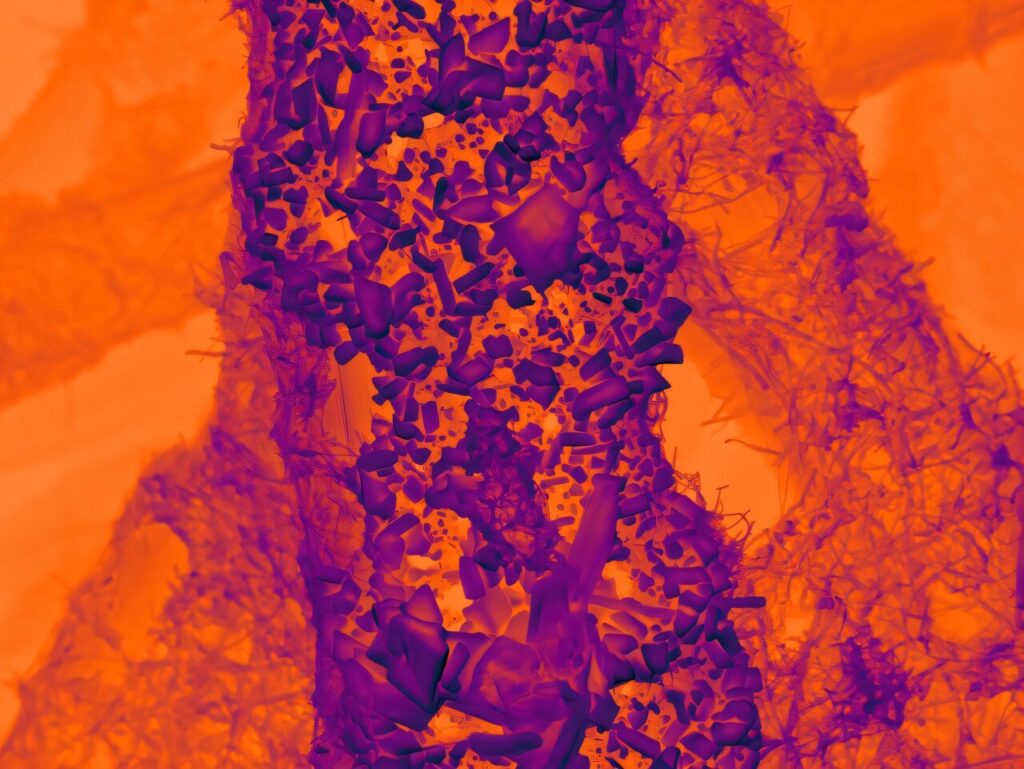Researchers have developed a sustainable catalyst that increases its activity during use while converting carbon dioxide (CO2) into valuable products. This discovery offers a blueprint for designing next-generation electrocatalysts.
A collaborative team from the University of Nottingham’s School of Chemistry and the University of Birmingham have developed a catalyst made of tin microparticles supported by a nanotextured carbon structure. The interactions between the tin particles and graphitized carbon nanofibers play a critical role in transferring electrons from the carbon electrode to CO2 molecules—an essential step in converting CO2 into formate under an applied electric potential.
The findings of this research are published in ACS Applied Energy Materials.
CO2 is the primary contributor to global warming. While CO2 can be converted into useful products, traditional thermal methods typically rely on hydrogen sourced from fossil fuels. Therefore, it is essential to develop alternative methods like electrocatalysis, which utilizes sustainable energy sources, such as photovoltaics and wind power, as well as the abundant availability of water as a hydrogen source.
In electrocatalysis, applying an electric potential to the catalyst drives electrons through the material to react with CO2and water, producing valuable compounds. One such product, formate, is widely used in the chemical synthesis of polymers, pharmaceuticals, adhesives, and more. For optimal efficiency, this process must operate at low potential while maintaining high current density and selectivity, ensuring effective use of electrons to convert CO2 to desired products.
Dr. Madasamy Thangamuthu, a research fellow at the University of Nottingham co-led the research team, said, “A successful electrocatalyst must strongly bond to the CO2 molecule and efficiently inject electrons to break its chemical bonds. We developed a new type of carbon electrode that incorporates graphitized nanofibers with a nanoscale texture, featuring curved surfaces and step edges, to enhance interaction with tin particles.”
Tom Burwell, a research assistant at the University of Nottingham undertook the work while studying at Centre for Doctorial Training in Sustainable Chemistry. He developed the approach and carried out the experimental work, he said, “We can assess the performance of the catalyst by measuring the electrical current consumed by the reacting CO2 molecules. Typically, catalysts degrade during use, resulting in decreased activity.
“Surprisingly, we observed the current flowing through tin on nanotextured carbon increased continuously over 48 hours. Analysis of the reaction products confirmed nearly all electrons were utilized to reduce CO2 to formate, boosting productivity by a factor of 3.6 while maintaining nearly 100% selectivity.”
The researchers linked this self-optimization to the tin microparticles breaking down into nanoparticles, as small as 3 nm, during the CO2 reduction reaction. Tom Burwell elaborated, “Using electron microscopy, we found that smaller tin particles achieved better contact with the nanotextured carbon of the electrode, improving electron transport and increasing the number of active tin centers nearly tenfold.”
This transformative behavior differs significantly from previous studies, where structural changes in catalysts are often seen as detrimental. Instead, the carefully engineered support in the catalyst developed by the Nottingham team allows for dynamic adaptation of tin and improved performance.
Professor Andrei Khlobystov, School of Chemistry, University of Nottingham, said, “CO2 is not only a well-known greenhouse gas but also a valuable feedstock for the production of chemicals. Consequently, designing new catalysts from earth-abundant materials like carbon and tin is vital for sustainable CO2 conversion and achieving the UK’s net-zero emissions target. Our catalysts must also remain active over extended use to ensure best value.”
This discovery marks a step change in understanding the design of supports for electrocatalysis. By precisely controlling the interaction between the catalysts and their supports at the nanoscale, the team has laid the groundwork for highly selective and stable catalysts to convert CO2 into valuable products.


